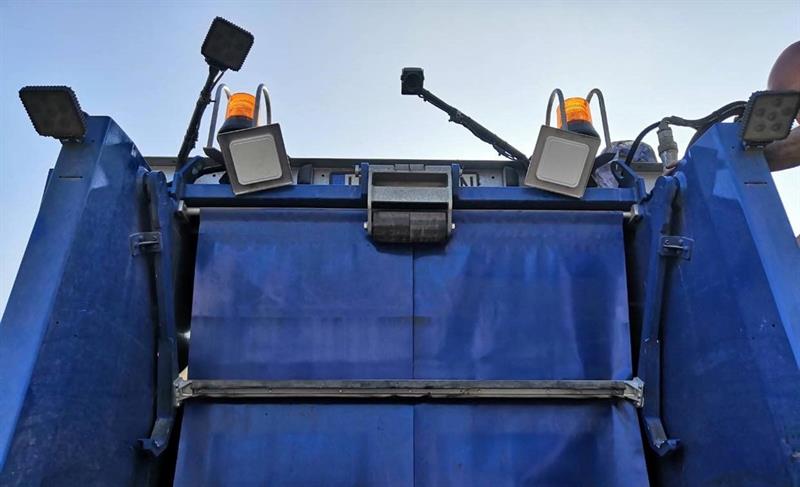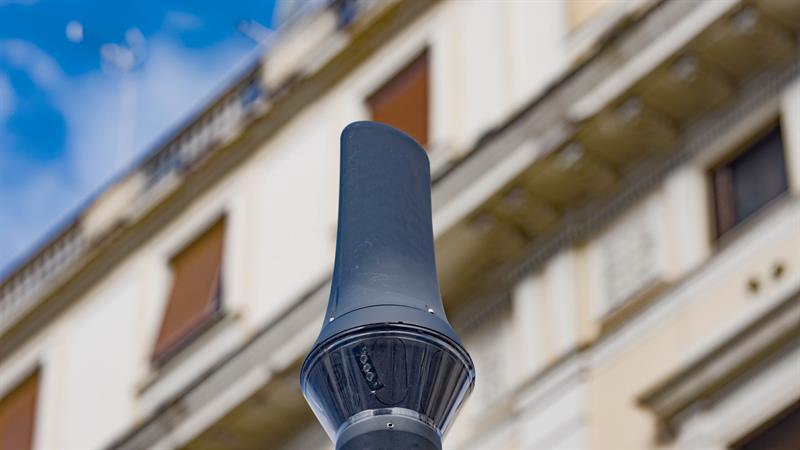Technologies like 5G and artificial intelligence (AI) are helping to drive many of these projects but, both governments and technology providers still need to overcome numerous technological obstacles as well as develop business models that will be able to deliver a clearer return on investment. So, is a fully interconnected smart city any closer to being realised?
Greg Corlis, managing director for emerging technologies at KPMG, said, “Not really. Cities are still struggling with the economics to really achieve smart city status. What we are seeing today is that most cities are still experimenting with these technologies for discrete use cases. Smart lighting is a relatively easy and safe use case for them to dip their toes in the water.”
According to Corlis, the more projects that are carried out and the more findings are shared, so the faster the technology can be rolled out.
Bratislava, the capitol of Slovakia, is working with Sensoneo on a large-scale smart waste programme, for example, The project aims to optimise the routes of waste collection trucks reducing their mileage and emissions and saving money on fuel costs.
Commenting City spokesperson Katarína Rajčanová said, “For the citizens of Bratislava, this would mean cleaner public spaces and more efficient waste collection services.”
The project requires the installation of 1753 Sensoneo sensors to monitor all containers of glass waste and underground bins across the city which will monitor their fill levels to make sure they are not being emptied unnecessarily. Sensoneo’s WatchDog device, which combines an RFID reader, GNSS satellite location tracking and a communications module, will be deployed on all waste collection vehicles to digitalise the waste collection process, automatically verify pick-ups and optimise routes.

A research project in Melbourne, Australia allowed its citizens to engage with smart city technology which is hoped will help with future city planning.
Professor Sarah Pink, chief investigator and director of the Emerging Technologies Research Lab at Monash University, said,: “This project will contribute important insights into how people perceive, value, and use emerging technologies in the urban environment.”
Locals were able to interact with the technology during Melbourne Knowledge Week (held at the end April) by scanning QR codes that explained the role of each, be they 5G-, AI- or Internet of Things (IoT)-based. The results of the project have yet to be shared but, by providing their feedback, those that took part in the live experiment will play a vital role in shaping their city.
“This partnership employs a transparent approach to data collection, which is also why it was so important for us to include the local community and invite them to take part in our live experiment,” added Prof Pink.
Town centre usage
In 2018 the’ Connected London’ team was formed to deliver on the mayoral manifesto. Since then, London’s full fibre coverage – where a cable runs from a building to a telephone exchange – is said to have risen from 4.7% to 21.1%.
An update from Connected London in October 2020 revealed how individual boroughs are working on their own digital district and fibre strategies. Westminster City Council, for instance, has secured £1.1m funding to run its Digital Street Markets project, which will see the deployment of secure and reliable wi-fi networks at all council-run street markets.
Richmond Council is working with transport AI company Vivacity Labs to understand if and how local residents have changed their habits of moving around the borough since the beginning of the COVID-19 pandemic.
Sensors will be used to anonymously monitor footfall and usage in certain areas, such as cycle lanes and the town centre. These insights will inform better planning to improve the road network and urban environment, with the aim of improving safety as well as making the borough smarter and more sustainable.
“Early in the pandemic we made urgent temporary changes to road and pavement space in order to accommodate for active travel and help people to keep their distance,” explained Cllr Alexander Ehmann, chair of the Transport and Air Quality Committee. “As we move into the recovery period, we anticipate that people’s transport habits and the way they use public space will continue to adapt. These sensors will give us a granular picture of how traffic levels, transport and pedestrian movements change through the course of a day, week or month.”
The digital IoT connected sensors that are being installed as part of the project are designed to provide accurate data on road and pavement usage. They cannot be used to collect personal data or for enforcement purposes.
The pandemic has revealed that much of the infrastructure for smart city implementation already exists. Similar to the Richmond Council example, Chicago city has used anonymised data to analyse travel patterns through the city as well as tracking people who were self-isolating. Various governments throughout the world also used smartphone data to track individuals infected with the virus and trace anyone else they came in contact with.
Smart traffic solutions
Three smart city trials being run in June by Envision in Rome are using IMX500 image sensors with AI processing functionality from Sony Europe.
The trial’s primary objective is to create a smart parking system to reduce pollution and gridlock caused by people trying to find a free space. Drivers are alerted via a smartphone app and directed to the closest empty parking space.
The project also includes a study to optimise capacity and increase the use of its public transport network. Smart bus shelters will count those getting on and off each bus to prevent overloading and allow a better number of buses and costs savings.
Finally, a smart lighting system will be activated at pedestrian crossings that uses low-latency lighting to make people using the crossings more visible to drivers to reduce the risk of accidents. Again, no images from this project are stored, nor leave the sensors used.

UK-based smart street lighting provider, Telensa, is involved in two projects. The first is in partnership with the University of Leicester where its PLANet smart lighting Central Management System (CMS) is being used to enable the management and control of its external lighting remotely from a secure online portal. According to Telensa, this makes Leicester the first university in the UK to adopt this kind of system.
Western Australia has also selected Telensa to provide the city of Stirling with a ‘Network-as-a-Service’ (NaaS) solution including wireless streetlight controls and a PLANet CMS. All the lighting in the city’s Princess Wallington Reserve public park has been converted to LEDs and PLANet will enable lighting levels throughout the park to be varied when needed to save energy and reduce emissions.
Previously, smart lighting has only been viable for large-scale smart lighting networks. Telensa’s NaaS model has been developed to bring smart streetlighting benefits to customers with smaller networks. The company claims that this model will generate immediate savings without the need for substantial investment in network infrastructure.
In contrast to Corlis’ answer that we’re no closer to fully interconnected smart cities being realised, others are more positive.
Steven Bornfield, senior consultant for data centre solutions provider, Chatsworth Products, said, “I think our biggest challenge in this field is about the size and volume of data transfers, and exactly how we’re going to handle that. There is a challenge, as well, to get power to all those different points, and to get it there reliably.”
However, Bob Flaherty, senior vice president of product management, Cimcon, added, “The short answer is we are closer. The longer answer is that the smart city market is moving along the traditional technology adoption curve, the same as many other strategically important solutions and paradigms, in order to find a ‘sweet spot’ in terms of achieving the promise.”













